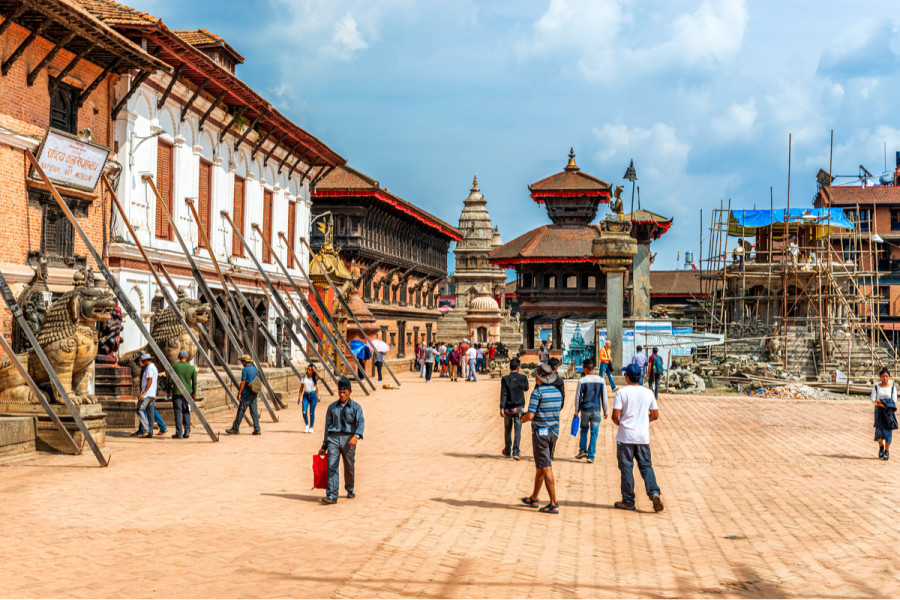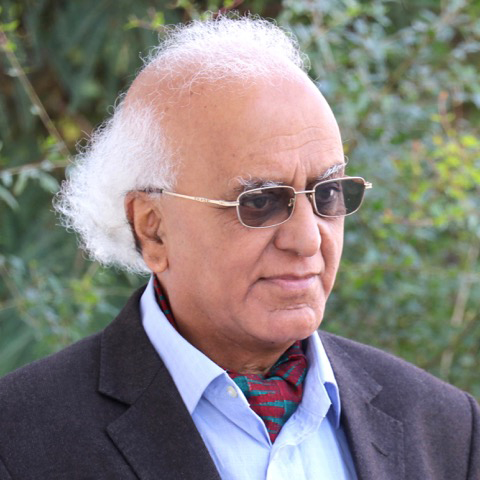Columns
Space, heritage and architecture
Land grabbing scandals involving politicians threaten architects’ poesy in urban space management.
Abhi Subedi
Two colloquiums addressed space, heritage and architecture issues in the past week—an interesting coincidence. Participating in discussions about these significant but not commonly addressed subjects, I realised how social organisations and governments overlook them. There is, unfortunately, an established notion that the government, its departments and agencies do not have plausible plans and ideas to address certain aspects of space and heritage issues, let alone play an important role in managing the architectonic forms of urban areas, especially of the Nepal Mandala or the Kathmandu Valley.
The first was the programme of the International Spring School titled “Living heritage, performance and placemaking”, organised by Monica Mottin of Heidelberg University and Monalisa Maharjan and Binita Magaiya of Social Science Baha, on March 20, 2024, at Jyapu Academy in Patan. The other was a colloquium and exhibition of the drawings and photographs of architectonic structures put together under the rubric “Modern encounters in architecture: Kathmandu Valley (1945-1985)” organised by the Kathmandu Institute of Architects. I was invited to participate in the colloquium by architect Biresh Shah at Taragaon on March 22.
These two programmes, which happened almost simultaneously, allowed me to present my discourses and share some of my visceral stories of writing plays based on the ancient architectural forms of the Nepal Mandala, especially of Bhaktapur and Kathmandu. I am writing this article to highlight some common wisdom of the two approaches to architecture and heritage.
The two seminars juxtaposed two eras and visions of the urban heritage and landscape in the Kathmandu Valley. Over the decades, I have been following the relationship between performance culture, architectonic forms and eloquent spaces. As one associated with theatre and the heritage of performance spaces, I was drawn by the common themes of these seminars, which is the quest for idioms to express the two different perspectives of construction and performance. For a heuristic reason, I would like to call the theme of the first seminar “the heritage of placemaking” and that of the second one as “modern architecture”.
The second seminar launched a book titled Modern Encounters in Architecture: Kathmandu Valley (1945-1985). The architects of the programme believe that "Kathmandu Valley emerged out of its medieval slumber in 1950." It saw a new era of modern development, the visual evidence of which are the assorted “early modern buildings” made in three decades after 1950. The architects claim that the modern buildings are mirrors of that new turn, modernisation.
The book gives annotated photographs of the modern buildings built over that period, along with photos and introductions of the architects. The nonagenarian architect Shankar Nath Rimal, who launched the book of 97 pages, and his erstwhile students, now senior architects, spoke about their experiences. Their emphasis on making the discussions about architectural forms more interdisciplinary by organising interactions between the academics of different disciplines impressed me. The participation of the historian and analyst Pratyoush Onta and non-architects was a perfect beginning in that direction. That the architects have initiated this kind of interaction one more time is noteworthy.
As shown by the photographs of the buildings in the book, many of which are still functional, it can be said that the modernisation of architecture began with them. However, the gradual or sudden developments of these “modern” forms that came into existence do not easily cohere with the social consciousness constituted by the evolution of the city heritage, the traditional houses and the dominant Asian Baroque buildings. What is clear is that trained and modern architects came and designed buildings, and they were made; several are still functional. Second, architects of the West, mainly from Europe, came, designed and made the buildings.
However, the ownership and agency of the planning and coherent vision are unclear. No individuals and no archives "preserved the original designs". Buildings designed for public and private purposes by architects were constructed. These modern forms became conspicuous in the city. But I am not pleading for any uniform city design by some architects and the continuum of that as functional heritage. Take the example of the history of Chandigarh, India, which was built according to the master planning and design of the famous architect Le Corbusier. That resulted from the planning needed at the beginning of the partition of India in 1948. People are not tired of retelling that story. It is an important functional design, a grand architectural narrative, but when I visited the city for the first time, I felt that elements like heritage and historicity that constitute a place like the Nepal Mandala were naturally missing.
The other question that the Kathmandu Institute of Architects stresses is the use of the landscape. However, ironically, land has become the most debated subject in the country. The scandals and stories of land grabbing involving politicians and government officials show that architects’ poesy in urban space management is seriously threatened. I recall attending the Nepali architects’ colloquium on November 22, 2014. Their proposition of creating a Nepal Mandala city stretching to the south up to Hetauda, leaving the northern zone like Shivapuri untouched, filled me with awe. I have discussed the issue in my article in Kantipur (December 1, 2014) under the title “Banghoda, sahar ra manche” or 'Zebra, city and man".
I would like to return to the theme of the first seminar organised by Mottin and friends. The essence and power of the theme “heritage and placemaking” constitute the soul of the architectural heritage of the Nepal Mandala. It is always vibrant and intangible, but kinaesthetic and always kept alive by people because they could create a consonance of performance and heritage. Modern architecture would do well if it kept some space for this vision and imbued modernism with the consonance of vibrant life, poesy, performance and functionality. Best wishes to all schools of thought.




 16.12°C Kathmandu
16.12°C Kathmandu















